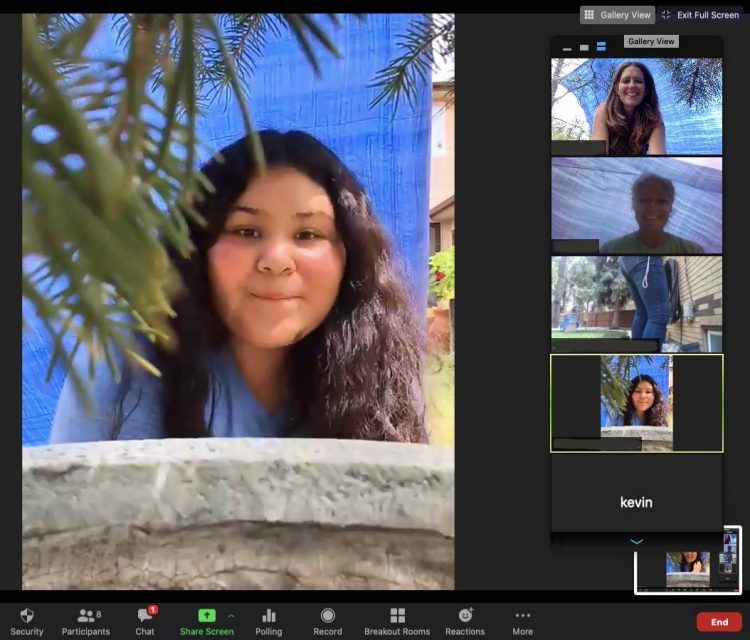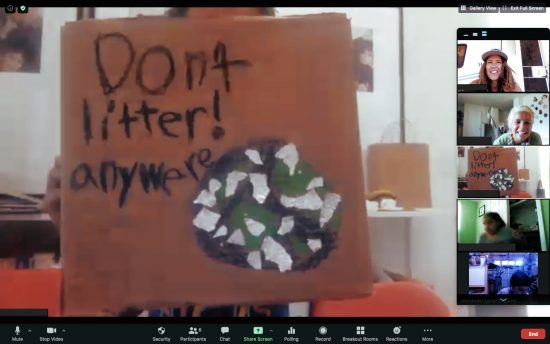Cottonwood Institute has always promoted a life of learning, loving, and living nature. This means disconnecting from our ever-connected devices and reconnecting to the natural world through all of our senses. We encourage our students to observe animal behaviors, to listen to whispers of the wind through the trees, to feel the texture of the ground beneath our feet, to taste the fruits of the plants around us, to smell the soil and trees that accompany us on our hikes.

Through these devices, we have continued to promote a life of learning, loving, and living nature with our #ExploreOutside summer programs. So while we are unable to get together physically, we are grateful for these devices that allow us to get together virtually, in nature and beyond. For without these devices, we would not have made the connections with our students at Casa de la Esperanza in Longmont, Colorado, while connecting with a couple of other students hundreds of miles away in Redlands, California.
For our second #ExploreOutside session, yes we needed to be connected to our devices, but we also connected to our senses. From collecting animal tracks to building shelters to making candy, we learned, we loved, and we lived in nature. For three hours a week for three weeks, nine students, two instructors, and two chaperones got to know each other, visited each other’s houses (virtually), and played and learned outdoors. Not only did we build shelters, but more importantly we built relationships and connections.
And just as in courses without devices, there were a few struggles – some with connectivity to the internet, some with connectivity to each other, but adversity is how we learn from each other, and how we build stronger connections.
In the end, though, we had a blast! Doing what, you ask?
Oh, let me tell you:

Week two transitioned into survival skills, where we got to build our very own shelter using the tools we received in our Thrival Kits. We also tried our skills at bear hangs and even got to learn compass reading skills.
Week three was focused on environmental issues ranging from food waste to littering to endangered species. We made orange peel candy, created up-cycled signs for our yards, and even had a guest speaker discussing the importance of pollinators and how they impact the environment.
From an educator’s perspective, I am constantly amazed at what my students teach me, and these kids were no different. Their insight, their inquisitiveness, and quest for connections to nature and community always inspire me to continue my quest for knowledge and community no matter where I am in the world.
That is the joy of staying connected through devices. While we need to be disconnected from them to recharge our senses, they bring us together in a world that temporarily needs us to be distant.
For that, we are grateful. For that we are connected.
In community,
April and Erin, #ExploreOutside Instructors and Nature Lovers
See more photos from the program here!

